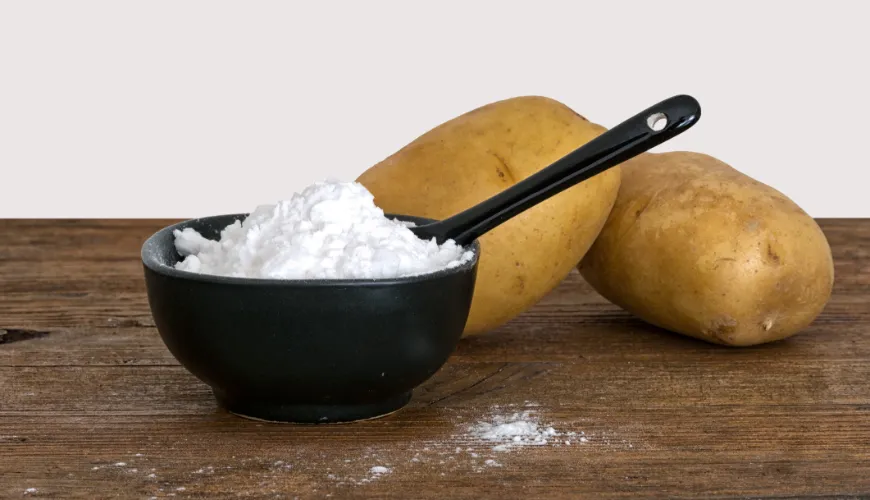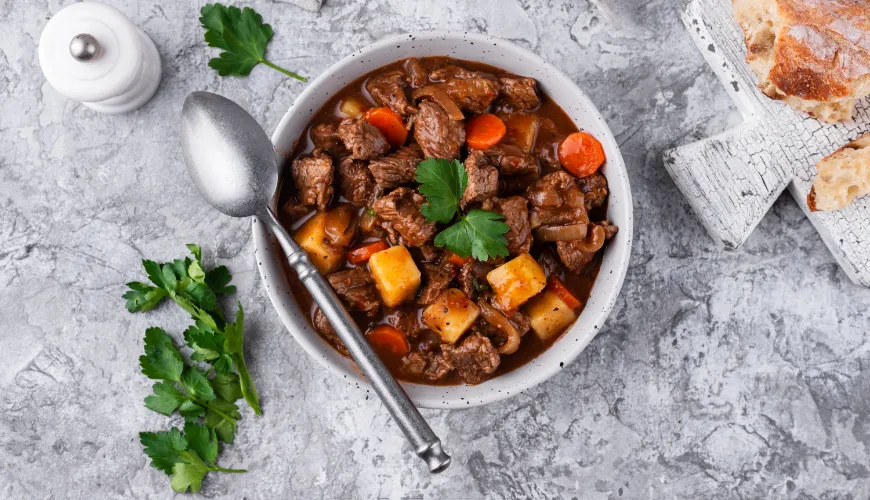
How to Prepare Bean Goulash Full of Flavor and Tradition

Bean Goulash – words that evoke warmth, comfort, and peace in many of us. This dish, often perceived as a simple and hearty meal, holds a special place not only in Czech cuisine but also in the hearts of those who cook and consume it. But what if we looked at this traditional recipe from a different angle? What if this dish, considered ordinary by many, could offer something more?
Origin of Bean Goulash
Bean goulash, as we know it today, is the result of a combination of various culinary influences. It originally originated in Hungary, where goulash was a typical shepherd's dish. The basis of this dish was meat, peppers, and onions, which were ingredients available in the local conditions. Over time, goulash spread to neighboring countries, where it began to be modified according to local customs and available ingredients. In the Czech version of goulash, we often find less spicy seasoning and the addition of legumes, specifically beans.
Beans themselves are a very interesting ingredient. They were brought to Europe only after the discovery of America and quickly found their place in kitchens across the continent. They are nutritious, easily available, and above all, filling. Combined with goulash, they create an ideal meal for cold winter evenings when it is necessary to provide the body with enough energy and warmth.
Ingredients and Preparation
The foundation of every good goulash is a quality base of onions, garlic, and paprika. These ingredients give the goulash its characteristic taste and color. To this, we add meat – in the case of bean goulash, beef is often used, but modern versions of the recipe may include chicken, pork, or even fish. Vegetarian variants completely omit the meat and focus on the richness of flavors that beans and vegetables can offer.
Beans are then another key element. You can use red, white, or black beans, each variant adding a slightly different flavor profile to the dish. It's good to soak them in advance, ideally overnight, so they cook faster and are more digestible. Another important step is proper seasoning – marjoram, caraway, bay leaf, and a bit of red paprika are essentials that complete the character of this dish.
Once all the ingredients are prepared, just gradually add them to the pot and let the goulash simmer slowly. This process can take several hours, but the result is a hearty and fragrant dish that warms both the body and the soul.
Variations on the Theme of Bean Goulash
Modern times bring new trends and inspirations, and even such a traditional dish as bean goulash can gain new forms. How about trying a goulash in a vegan version? Simply replace the meat with soy cubes or tempeh and use vegetable broth instead of meat broth. Adding various types of vegetables, such as carrots, celery, or tomatoes, then adds even more depth of flavors to the goulash.
And what about a bean goulash with an exotic twist? By adding coconut milk, curry seasoning, and lime juice, we can create a fusion dish that surprises with its freshness and unusual combinations. Beans are an ideal base in this case because they absorb various flavors and spices well.
Another interesting variant is the use of other legumes. For example, chickpeas or lentils can give the goulash a completely different character. If you want to experiment, you can also try adding sweet potatoes or pumpkin to the goulash, which will give the dish a gentle sweetness and creamy consistency.
Nutritional Values and Health Benefits
Bean goulash is not only tasty but also very nutritious. Beans are rich in proteins, fiber, and various vitamins, especially vitamin B. They are also a good source of minerals such as iron, magnesium, and zinc. Thanks to the high fiber content, they help maintain a feeling of fullness and regulate digestion.
Goulash, especially in its vegetarian or vegan version, can be a great way to incorporate more plant-based proteins into your diet. For those mindful of their weight or trying to eat healthier, bean goulash is an ideal meal – it's hearty but relatively low-calorie if prepared with minimal fat.
Meat-eaters will appreciate the combination of beans and meat, which provides the body with necessary proteins and energy. And importantly, bean goulash is a dish you can prepare in advance and store in the fridge for several days without losing its taste – rather, the flavor deepens even more.
Bean Goulash and Dining Culture
Bean goulash is not just an ordinary meal but a symbol of hospitality and sharing, with a firm place in many families. It's cooked for large family celebrations or gatherings with friends, prepared in a large pot, and everyone can take as much as they want. In today's fast-paced times, where we often eat without thinking, the preparation and consumption of bean goulash can be a return to traditions. Shared dining strengthens relationships and friendships. Bean goulash can be more than just a dish for cold winter evenings; it offers many variations that appeal to different tastes. Whether it's the classic version with meat or the modern vegetarian or vegan variant, it always brings a piece of history, culture, and home. This traditional dish may surprise you with its simplicity and richness of flavors.

